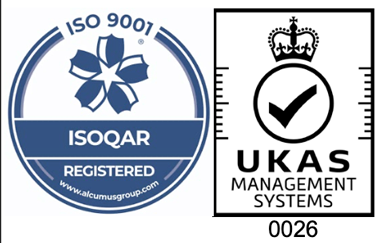A call for sustainable rubber production in the name of our planet
4th July, 2019
Do you ever stop to think about where your rubber comes from? Fifteen years ago, it was probably Malaysia. Ten years ago, Thailand stepped up and has dominated the global rubber market ever since.
Southeast Asia has historically profited from the rubber industry, but newfound growth has ushered in an age of terrifying ecological instability. In this blog post, we’re looking at the state of rubber production today, and calling for more sustainable rubber production – all in the name of our planet.
What’s so special about Thai rubber?
Honestly? Nothing. Natural rubber produced in Thailand is grown predominantly from the same plant used all over the world – H. brasiliensis. More commonly referred to as “the rubber tree”, H. brasiliensis is a crop that has been grown on an industrial scale ever since the discovery of rubber curing, or ‘vulcanisation’.
Vulcanisation is the process by which natural rubber is heated and treated with an additive such as sulphur, “curing” it and making it usable for a variety of different applications. It was invented by Charles Goodyear in 1839 and has since allowed the rubber industry to diversify and grow in ways never before imagined.
So, why is Thai rubber dominating the rubber markets today? Put simply – the sheer quantity of natural rubber that Thailand is capable of producing. Geographically, Thailand has no more significantly arable mountainous land than Malaysia and neighbouring Myanmar. It certainly has far less than China.
However, a period of competition from Vietnam between 2003 and 2008 saw farmers in northeast Thailand deciding to convert existing cropland to rubber plantations. At that time, only 11% of these new rubber plantations replaced natural forests, due in part to the previous mass deforestation of the region.
Following the 2008 financial crisis, the global rubber markets suffered, and Thailand’s march towards global domination faltered as farmers began planting fruit trees instead.
As the economy recovered, the rubber trend continued to spread like a fever across Southeast Asia. Farmers in China and Vietnam, in particular, were able to retain autonomy of their crop cycles, and many began to deforest areas of native vegetation in order to nurture rubber trees, palm oil plantations, and coffee.
An 11-year study that took place between 2003 and 2014, covering the dramatic changes in commercialised agriculture in Southeast Asia, found that over the study period “farmers converted approximately 74,960 km2 of land to rubber so that by 2014, rubber accounted for 8 per cent of total land cover in the region”.
The region in question covers “areas where land-use change has been most dramatic―all of Cambodia and Lao People’s Democratic Republic (PDR), most of Vietnam, parts of Thailand, Shan State in Myanmar, and Xishuangbanna Prefecture in southern Yunnan, China”.
But what exactly is the downside of this? Thailand, Indonesia, and Malaysia have continuously retained their status as the top rubber producing countries for over a decade now. Previously impoverished communities have been offered a lifeline, and young entrepreneurs are driving 4x4s through the streets of their villages.
The downside is that over the past ten years, Southeast Asia has experienced an immense loss of biodiversity.
Why is the loss of biodiversity in Southeast Asia a problem?
Before digging deeper into this, we want to explain the concept of biodiversity itself. Biological diversity is the foundation on which our planet is built. Think of it like homeostasis for the planet – the need to be balanced in order to achieve order, and stable equilibrium.
You’ll mainly hear homeostasis as a term used in reference to the body. Take your internal body temperature, for example. A healthy person will have an internal body temperature of around 37°C. The body controls temperature by making or releasing heat, and it can only do this if it’s healthy.
Think of the planet as a body. In a state of homeostasis or equilibrium, it needs to be healthy to function properly. We’re already seeing the more violent effects of climate change affecting the planet – unprecedented heatwaves are sweeping Northern Europe, and the Earth is moving towards a more changeable global climate.
Loss of biodiversity in Southeast Asia, in particular, is having a huge effect on the planet. This region is known as a “bio-cultural hotspot”, encompassing about 20 per cent of global plant, animal and marine species. Three of the most diverse countries in the world are located in this region – Indonesia, Malaysia, and the Philippines. Here, mountain ecosystems full of ferns, moss, and orchids are noted for their diversity and contribution to natural CO2 capture.
The immense deforestation that this region has seen – and continues to see – is upsetting the balance. It’s not only vegetation that is being eradicated, often by burning down huge patches of forest at once, but also hundreds of species of unique wildlife whose habitats are turning into industrial hotspots.
This rapid advancement of rubber and palm oil plantation development isn’t slowing down, either – the areas where these crops are grown is projected to expand from 4.3 to over 8.5 million hectares by 2024. In terms of reputation management, Southeast Asia isn’t sitting prettily in the ecological good books – in fact, companies investing in Southeast Asia are ranked as the least sustainable globally.
But avoiding rubber – and palm oil, for that matter – is impossible. A world without rubber simply would not function. So, what are the next steps? How can we, as a rubber manufacturer located many thousands of miles away from Southeast Asia, minimise the loss of biodiversity occurring in this region?
Sustainable rubber production, that’s how.
Does sustainable rubber production really hold all the answers?
Our world has an insatiable demand for rubber that isn’t slowing down. Unsustainable practices have created an environment in which the entire rubber supply chain is comfortable risking the futures of our children and grandchildren… all for a cheaply produced product.
There are real, tangible consequences we will all have to face if the rubber industry continues to operate the way it has historically. Thankfully, programmes like the Natural Rubber Sustainability Programme are stepping up to encourage more sustainable rubber tapping practices, in an effort to deal with the problem at its source.
Launched as a joint venture between tyre giant Pirelli and Indonesian rubber company Kirana Megatara in 2014, the Natural Rubber Sustainability Programme aims to educate farmers about the best growing and rubber-tapping techniques. Its aim is to “help produce a higher quality and contamination-free rubber, and to reduce deforestation.”
How is this implemented? Well, the programme focuses on teaching farmers to extend the yield and lifespan of their rubber trees, which reduces the need to expand plantations and further deforest an already anaemically diverse region. Farmers are also taught to increase the quality of their rubber, aiming for a contamination-free product.
And the benefits of such a programme? Pirelli gets better quality rubber to make better quality tyres. Farmers are able to bring in higher revenues. Productivity and income increase due to higher levels of education, furthering domestic economic growth without further damaging the land’s natural resources.
We want to raise awareness about this programme and others like it so that you can understand the impact of your purchasing decisions. Yes, it may seem as though we’re years away from a fully sustainable rubber industry but understanding where your rubber comes from and who it impacts is an important step in deciding the future of our planet.
Please speak to a member of the Aquaseal team for more information on how we source our materials, or if you have a sustainable rubber idea. We’d love to hear from you. Tel: 0191 266 093. Email: enquiries@aquasealrubber.co.uk.


